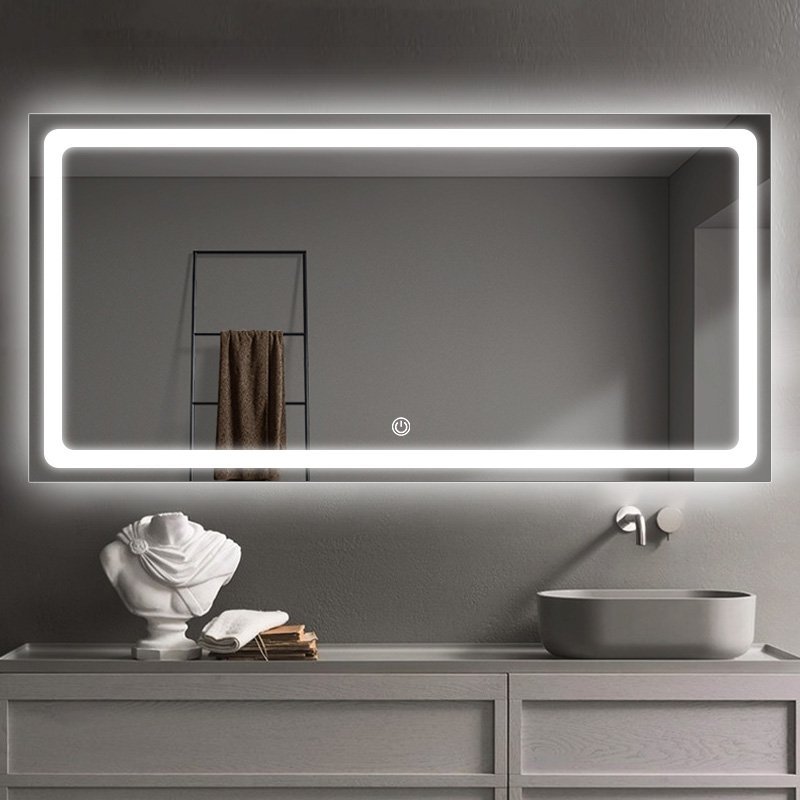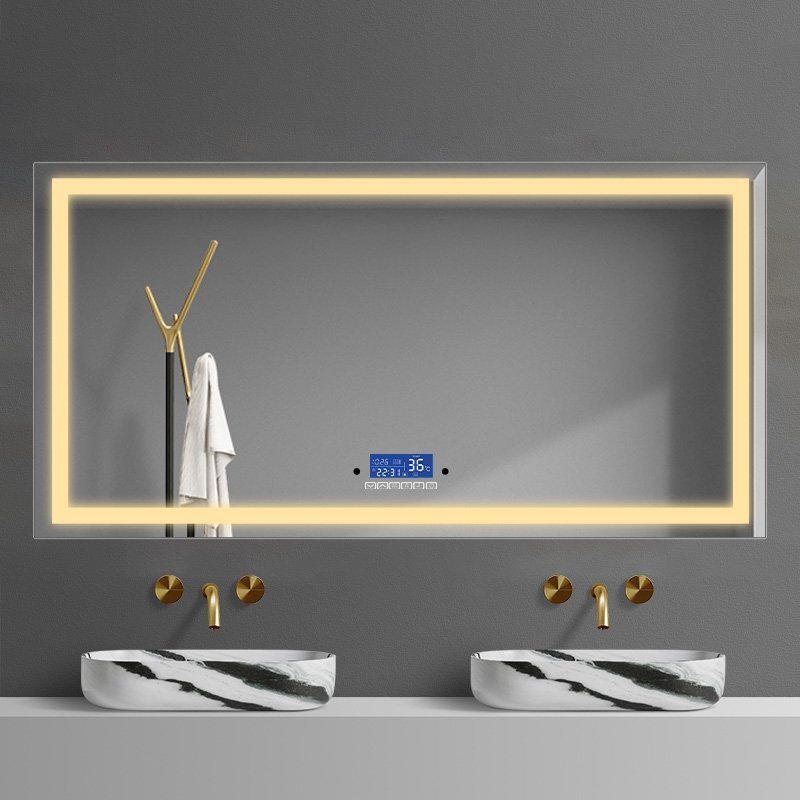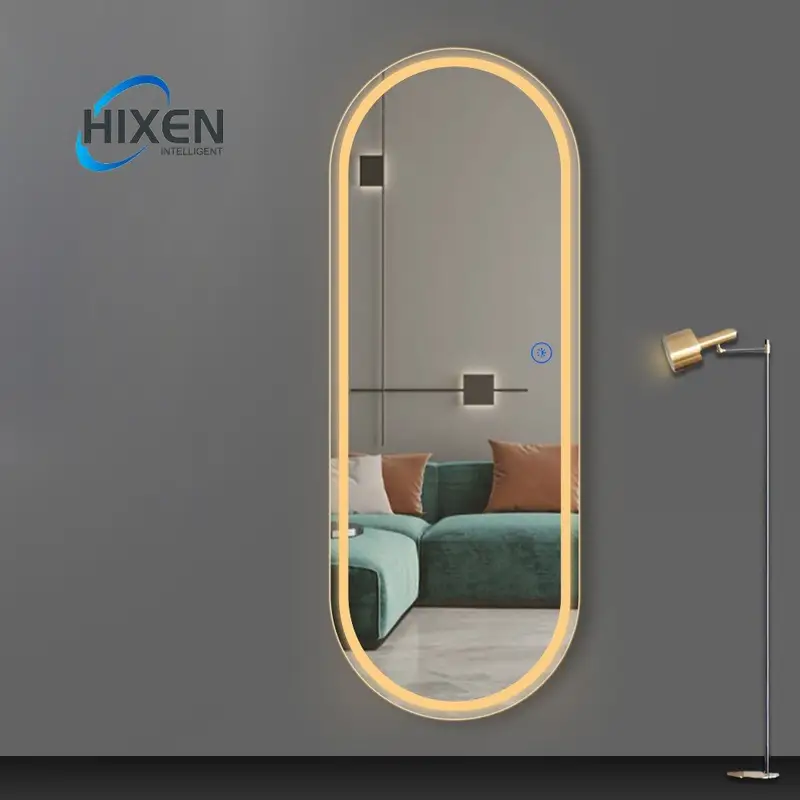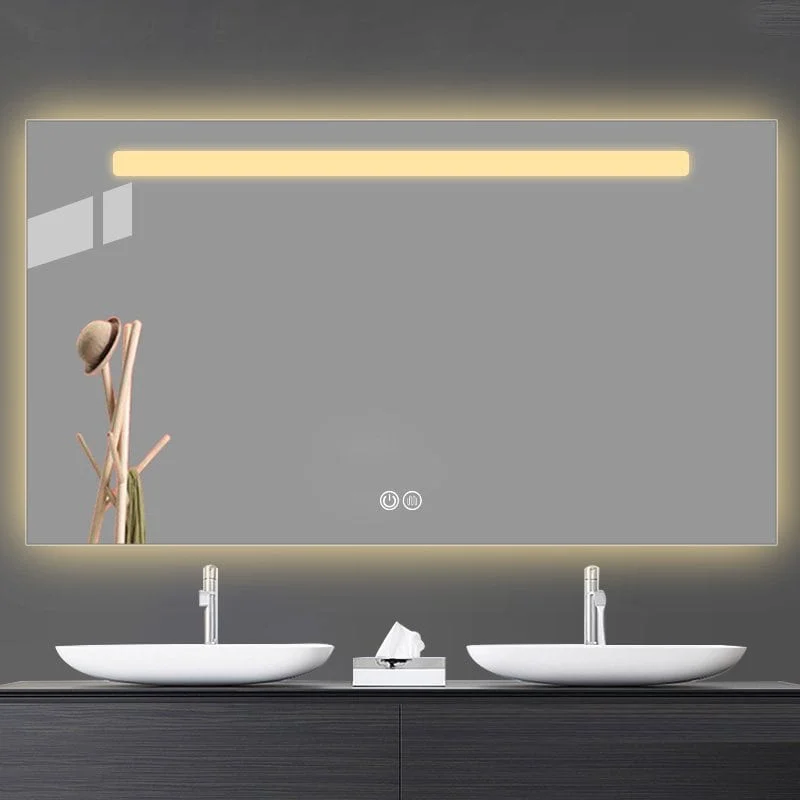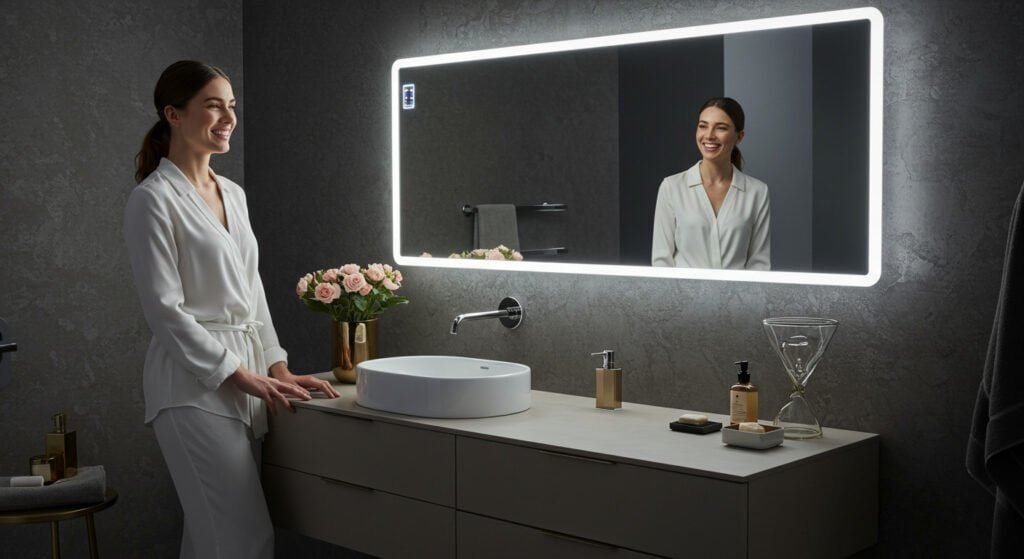|
Mendapatkan Anda Audio Trinity pemain siap ...
|
Is your living space feeling confined and uninspiring? What is the best living room mirror decorating ideas? Many homeowners underestimate the transformative power of strategically placed mirrors, missing opportunities to enhance their living areas with depth, light, dan gaya.
When selecting living room mirrors, consider size proportional to your wall space, placement opposite light sources, shapes that complement your design aesthetic, and functionality such as LED lighting options. The right mirror can dramatically transform your space by amplifying natural light and creating visual expansion.
Let us explore how these reflective elements can elevate your interior design while addressing practical concerns.

What Size Mirror Works Best for Different Living Room Layouts?
The size of your mirror can have a significant impact on how it works with your overall design and influences the perception of space in your living room.
For optimal balance, select mirrors proportionate to your wall space—approximately two-thirds the width of furniture it hangs above. Large rooms accommodate statement pieces (40+ inci), while smaller spaces benefit from medium mirrors (24-36 inci) that create depth without overwhelming the area.
When considering the size, think about the size of the wall and the proportion of the room. An oversized mirror can be a great focal point in a big space. But in a small space, you can have a carefully sized mirror to make the room feel bigger. The connection between the size of the mirror and the size of the room is critical. An undersized mirror on a vast wall can appear insignificant; an oversized mirror in a small room can overpower the space. Many designers say to use rectangular bathroom mirrors in traditional design and something more dramatic in a contemporary design. The same is true for living rooms.
Which Mirror Shapes Complement Various Interior Design Styles?
The shape matters too. The silhouette of the mirror is essential relative to how it fits with your interior design style.
Round mirrors soften angular rooms and furniture, working beautifully in contemporary and Scandinavian designs. Rectangular options provide classic versatility for traditional spaces, while geometric or irregular shapes create distinctive focal points in modern or eclectic interiors.
Various mirror shapes create different design impressions. That classic rectangular bathroom mirror does nice in a living space that’s either a traditional or a transitional home; it gives established elegance. An oval mirror is decidedly gentry without having any sharp corners, allowing it to bridge the gap between classic and contemporary shapes. Want to make a statement? Create a focal point with a mirror in a black frame. The black mirror draws your eye. Against a light-colored wall, the strong black frame serves as an architectural element.
In a minimalist space, a frameless mirror with clean lines is great because it doesn’t impede the simplicity but does add depth. When you want to bring in more traditional or maximalist rooms, you can have an ornate frame with gilding or intricate details. When you’re thinking about room mirror ideas shape, think about the lines of the space that you already have. For instance, in a square room, a circular mirror can soften the corners. And if you have some curved architectural elements in the space, a more angular mirror shape can provide counterbalance.

Where Should A Mirror Be Placed In The Living Room?
Placement is critical for mirrors in your living room. Mirrors can have a profound effect on light distribution and spatial perception, thereby altering the entire atmosphere in your living room.
Position mirrors opposite windows or light sources to maximize natural light reflection, creating brighter, more inviting spaces. Alternatively, place mirrors across from architectural features or artwork to create visual repetition and depth that draws the eye through the room.
When thinking about living room mirror placement, think about what those mirrors are reflecting. You want them to reflect something appealing: the park across the street, your beautiful living-room furniture, a fireplace or some other architectural feature. You don’t want the mirror reflecting a piece of doggie heaven or a doggie stairway to heaven. Mirrors over a mantel or over console tables create a classic focal point in your living room, which can anchor the design of the entire space.
In narrow corridors or small living rooms, mirrors on the side wall can help widen the space visually. Juga, for modern interiors, consider how to install a wall mirror with lights. The practical lighting of the wall mirror with lights serves as an excellent lighting source when needed. Make sure to consider height, and interestingly enough, the center of the mirror should usually hang at about eye level, 57 ke 65 inci dari lantai.
How Can LED Mirrors Enhance Your Living Room Ambiance?
The technology of the LED mirror has come a long way as well, now offering sophisticated lighting solutions that can make your living room not just look good, but also function well.
LED mirrors integrate ambient lighting directly into the mirror design, creating soft illumination that enhances room ambiance while eliminating harsh shadows. These versatile fixtures offer adjustable color temperatures, allowing you to transition from energizing daylight to relaxing warm tones as evening approaches.
Now, while led bathroom mirrors and lighted vanity mirrors have become standard in this area, using them in your living spaces is a new and emerging trend in residential lighting design. Led mirrors in a living room, or a lighted mirror in the living space, can be both a decorative element as well as a functional light source. Modern lighted mirrors in the bathroom have led to the design of lighted wall mirrors for living rooms that are uber-slim, with integrated lighting that makes it look like they actually float on the wall.
Selain itu, they come with all sorts of bells and whistles such as, touch sensors for brightness, built-in dimmers and some even have Konektivitas Bluetooth to allow you to connect your phone and listen to music or have a phone call through the mirror. Beyond the practical advantages, these LED light mirror vanity designs create terrific visual effects. The backlit mirror, when installed, can create a halo effect that adds depth and dimension to your walls. It turns an ordinary reflective surface into something that takes on its own life as a wall feature and provides light.
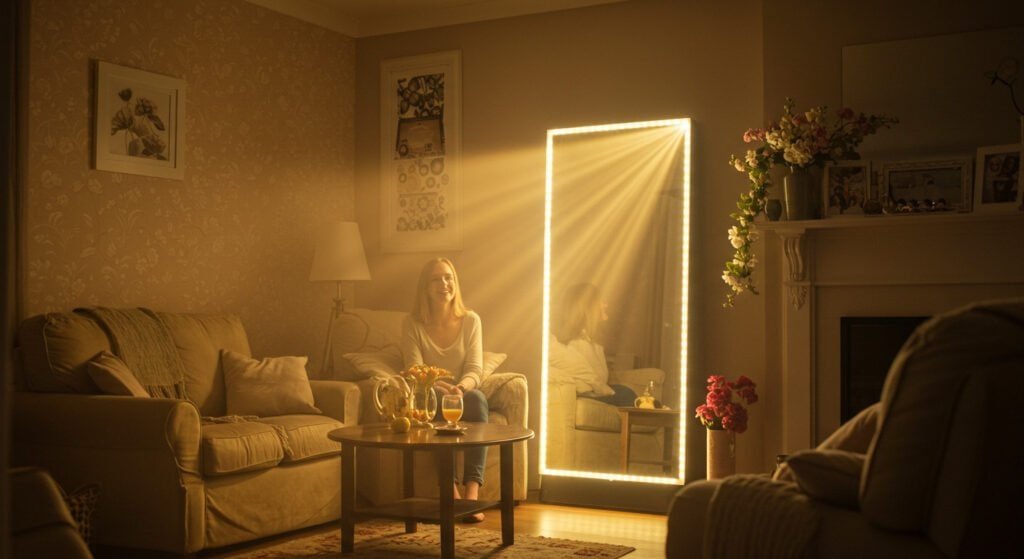
What Is Trending In Mirrors?
As always, mirror design continues to march on, with innovative, functional applications as well as artistic statements in and of themselves.
Current trends favor oversized statement mirrors, mixed-material frames combining wood with metals, sculptural and irregular shapes, and integrated technology such as LED lighting and smart features. Sustainability is also driving interest in reclaimed and ethically sourced materials for mirror frames.
The LED mirror for the bathroom has taken on a new role in living rooms. Similar to backlit bathroom mirrors, and light up vanity mirror styles, these LED options for living rooms can create ambient lighting in a space while being a design element unto themselves.
Another big trend I’ve seen is with mirrors with black frames. The black frame, or mirrors with black frame options, is a fabulous way to add definition to a space, visually speaking, almost like creating an architectural element, especially when paired with light-colored walls. Akhirnya, for those people in a more maximalist space, we’re starting to see the rise of groupings of mirrors on walls. Instead of putting up one big mirror, people are hanging multiple mirrors in all sorts of shapes and sizes. When done creatively, these mirror collages end up being an artistic element on the wall.
New manufacturing techniques have also brought textured and antiqued mirror options. These mirrors diffuse the reflection, creating a more subtle and atmospheric effect. People are also jumping on the full length mirror in living room bandwagon. Designers started placing these mirrors typically found in bedrooms as reflector wall decor in the bedroom, leaning floor mirrors in living room spaces.
How to Create a Statement Wall with Multiple Mirrors?
Taking a collection of mirrors and putting them in different shapes and sizes on the wall, thus turning it into an art piece, creates a dynamism in that space, as you get the benefit of light and space enhancement.
When creating mirror gallery walls, maintain cohesion through a unifying element—whether consistent frame finishes, complementary shapes, or similar scale—while allowing for enough variation to create visual interest. Position the central or largest mirror at eye level, then build outward with smaller pieces.
Take your time laying the mirrors out to find the perfect look before hanging them on the wall. Kemudian, when you do hang them, be conscious of the negative space created between each mirror. If the negative space is too crowded, the area can be a mess. If there’s too much negative space, the composition can get lost on the wall.
When you’re thinking about creating a collection of wall mirrors, start by picking out your centerpiece or main focal point mirror. Khas, you select the largest and most eye-catching piece as the anchor, and then you build aesthetics around that focal point.
This draws people into the piece and, when possible, use mirrors of varying depths. When there’s more depth, it creates a sculpture sense and draws even more attention.

Full Wall Mirror Design Ideas for Living Room
A series of mirrors is just one approach to using mirrors to improve the look and feel of a space. Another way is a floor-to-ceiling, wall-to-wall mirror.
Installing full wall mirrors visually doubles your space, making them ideal solutions for smaller rooms or areas lacking natural light. When implementing this dramatic feature, consider using sectional panels rather than a single sheet for easier installation and more forgiving alignment.
It’s more than just adding some space to an area; you are completely changing the way that light moves in a room—capturing light and throwing it around with a mirror. In modern spaces, a mirror that goes edge to edge with no frame, and butts right up to the walls, can be amazing.
In a more traditional space, a paneled or gridded mirror on the wall could be great. Whatever the case, when you’re thinking about doing a full wall of mirrors, be picky about what you’re going to be looking at in those mirrors.
For enhanced functionality, some homeowners integrate bathroom vanity mirrors concepts into living spaces by incorporating sections of LED mirror technology within larger mirrored walls. This creates focused lighting zones within the broader reflective surface. To avoid overwhelming visual effects, balance mirrored walls with matte finishes elsewhere in the room, creating necessary contrast that prevents the space from feeling too reflective or disorienting.
Floor Mirror in Living Room: Styling Tips and Ideas
One of my favorite tricks is using a floor mirror. You can use it to check out your outfit before leaving the room, but you leave it there because it looks so good. It’s a totally different thing.
Position floor mirrors at angles that capture optimal reflections—natural light sources, attractive views, or architectural features—rather than directly facing blank walls or cluttered areas. For maximum impact, select substantial sizes (at least 60 inci tinggi) with frames that complement your interior style.
When you think about how to use a floor mirror in a living room, it should be in the corner so that you can create diagonal reflections. If you have a seating area and you put that floor mirror in the corner, you will be able to see a reflection of that seating area in the mirror. Actually, it doesn’t stop there because rather than being boring and the mirror is just leaning in the corner, that floor mirror will also capture whatever is in that seating area.
For transitional spaces between rooms, leaning floor mirrors against walls creates casual elegance while brightening hallways or landings. When selecting styles, consider how the mirror’s frame complements your design theme—minimalist interiors benefit from slim metal frames or frameless options, while traditional spaces harmonize with substantial wooden or ornately carved surrounds.
Don’t forget that a lot of floor mirrors now are coming with incorporated LED lights, which is fantastic. They provide that wonderful glow, that ambient lighting. Other floor mirrors have hidden, built-in storage or a place to hide your jewelry. When you are trying to figure out how to treat the floor mirror in the room, understand that it does need a bit of visual space around it, like any piece, so that you can appreciate the form of the mirror and how it looks architecturally in the space.

Full Length Mirror Ideas to Maximize Space and Style
Full-length mirrors have finally come into their own as living room mirrors. Mount full length mirrors on doors or in transitional spaces to maximize functionality without sacrificing wall space. For decorative impact, select frames that complement your interior design—minimalist metal frames for contemporary spaces or ornate carved wood for traditional settings.
Full length mirror in living room ideas often focus on dual-purpose applications. When positioned near entryways, these mirrors serve both practical functions for final appearance checks and design purposes by enhancing light distribution and spatial perception.
In a small apartment, you might want to consider a pivoting or adjustable full-length mirror. Or one that’s angled where you can see yourself from different vantage points in the room. In a contemporary setting, a backlit full-length mirror creates a dramatic visual while providing ambient lighting. Use the same lighting technology from the led bathroom mirrors to create a floating effect on the wall, giving you some architectural interest.
Just be careful with the reflection of whatever the mirror is showing. You want to place it where it’s reflecting an attractive view or is bouncing light. You don’t want it to reflect an ugly area. In a rental property where you can’t put a mirror in permanently, a free-standing full-length mirror can work well. They make a huge impact and can be used anywhere. You’ll also find some cool designs that have a pivoting mirror with storage in the back. These are great for storage and to save space in urban environments.
Small Living Room Mirror Ideas: Making Limited Spaces Feel Larger
In small living environments, mirrors are tools you use to make the space look bigger and distribute light.
For small living rooms, position mirrors opposite windows to maximize natural light reflection and create the illusion of additional space. Consider oversized mirrors relative to the room’s dimensions—contrary to intuition, larger mirrors often make small spaces feel more expansive than multiple smaller pieces.
Horizontal and rectangular mirrors can make a small, narrow room look wider. A tall rectangle can make the ceilings in a room look taller. You can take the same principles of design from small bathroom mirrors and apply them to a small apartment living room. Clean lines and minimal frames are what you’ll aim for.
Strategically place lighting in front of mirrors. If you have a mirror reflected in another mirror, you multiply the light source in the room. Maybe a wall sconce or a table lamp reflected in a mirror on the opposite wall. To maximize impact with a full-length mirror in a small space, choose one with a decorative frame that makes a statement. This way, you don’t have to hang a picture or anything else on the wall next to the mirror.
Secondly, if you want to get super creative, you can strategically place mirrored furniture in the room. You could have a mirrored side table next to the couch, or perhaps a mirrored surface on the console behind the sofa. This approach provides different heights of reflective surfaces in the room to bounce light around. Don’t forget about over-the-door options. Many people use back-of-door or over-the-door mirrors when working out or getting dressed. These could be a cool way to add some reflective surfaces to your space without taking up wall space. Kemudian, of course, in a temporary living situation or rental property, you can put a leaning floor mirror anywhere you want without making holes in the walls.

How to Decorate Your Home with Mirrors Beyond the Living Room
Even using some of these mirror design principles intermittently throughout the rest of your home could provide a nice, cohesive feel as you walk through the house.
Apply consistent mirror styling across connected spaces to create visual continuity—coordinating frame finishes, bentuk, or design characteristics that complement each room’s function while maintaining aesthetic harmony. Consider functional requirements for each space alongside decorative impact.
In the entryway, perhaps you’ll use a mirror that includes hooks for keys or a small shelf for mail or other items. This mirror multitasks as an entryway check point as well as a storage or staging area. In the dining room, you can use a decorative mirror over a sideboard or buffet. This not only makes the room look nice but also reflects candlelight and the table setting. This reflection can create an incredible mood and feel during dinner parties.
You would put a mirror on the back of the door or on the wall itself so you could see your entire outfit, head to toe. This type of mirror would provide a huge benefit in hallways and transitional spaces where you might feel boxed in or have no natural light.
Misalnya, in the bathroom you might have a rectangular mirror with a certain frame material. In the living room, you could choose a larger, rectangular mirror with the same frame material. Kemudian, maybe in the kitchen, you opt for squares, circles or triangles all with that same material or finish. Mirrors on the wall, leaning mirrors, or framed mirrors all create an enhanced sense of space. To a point, you can create the visual illusion of whatever you want with mirrors.
Kesimpulan
The strategic selection and placement of mirrors transforms living spaces through enhanced light, expanded visual dimensions, and refined aesthetic impact. Consider your specific spatial challenges, design preferences, and functional requirements when integrating these reflective elements.
- Untuk mempelajari cara memilih cermin kamar mandi yang tepat klik di sini.
- Untuk mempelajari cara memasang cermin pilih di sini.
- Untuk mempelajari cara memilih cermin ukuran yang tepat klik di sini.
- Untuk mempelajari bagaimana cermin dibuat klik di sini.
- Klik di sini dan Anda akan mengetahui mengapa kami terlihat lebih baik di depan cermin.
- Klik di sini Anda akan belajar tentang TOP 10 produsen cermin led untuk 2024.
- Klik di sini untuk mengetahui Mengapa lampu cermin rias saya tidak menyala?
- Cari Tahu Berapa Tinggi Seharusnya Cermin Kamar Mandi?Klik disini
- Klik di sini jika Anda tidak tahu cara membersihkan cermin Anda
- Untuk mengetahui cara memperbaiki Cermin Sensor Sentuh Tidak Berfungsi klik di sini






